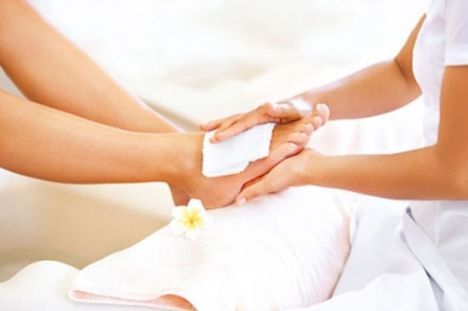Ingrown Toenail: Symptoms, causes and treatment
The ingrown nails or ingrown toenail is an annoying and painful ailment. They occur when the toenail grows inward, which can cause pain, swelling and redness. Too tight shoes and little manicured nails can make us vulnerable to our feet to suffer from such ailments, being the toenail which most affected, although this problem can appear on any finger. What can we do to prevent ingrown toenails and to relieve symptoms when it appears?
Table of Contents
Ingrown Toenail Symptoms
The ingrown toenail is characterized by symptoms such as pain and inflammation and can become infected. The disorder worsens when the hangnails become infected and a certain amount of pus appears. Although the big toe of the foot is the most vulnerable, the condition can affect to any finger.
Ingrown Toenail Causes
Choosing the most appropriate footwear is a matter of health, in this case, the health of our feet. Wear too tight shoes or inferior size can cause problems as the emergence of the finger. Badly cut nails or not caring for the hygiene of the foot also can be a risk. The most common causes of an ingrown toenail are as follows:
Hereditary factors
On many occasions, the fact that the nail grows downwards, causing it to become ingrown on the skin of the finger is due to heredity factors.
Trauma
On some other occasions, what causes an ingrown toenail is a blow to the finger, the fact of hitting a finger against a cloud, or tripping over a thrown object; also doing some activities that involve pressing the fingers together, some examples of activities that cause this would be kicking and running.
Doing the wrong nail cutting process
Many of the occasions that an ingrown toenail is diagnosed is because the patient does not know or practice the correct technique to cut their nails, this is important, because cutting the nails more than they should give more freedom for them to grow. According to the shape they take from far below, so the slightest deviation in the growth of the nail, in the long term will cause an ingrown toenail; and because the nail is growing badly from further back, it is more difficult to correct the growth of it.
Use of inappropriate footwear
Another very common cause of ingrown nails is due to the fact that the patient does not use appropriate footwear, since the one that wears generates pressure in the part where the fingers are, and causes the nail to grow downwards.
Ingrown Toenail Treatment
The first thing to do is that, in order to reduce the pain, water should be boiled and salt should be added. Now the finger that is affected by the ingrown toenail is soaked for a few minutes. This has the purpose of softening the nail and thus making the process of cutting the nail easier and the salt that was added to the water has the function of alleviating the pain generated in the process.
It should be cut with a nail clipper or small scissors, those that are used to cut the hairs of the nose are a good option because they are resistant and generate enough force, so they will not be easy to reach to break. It is extremely important that the instrument used is disinfected; this can be by immersing it in alcohol or exposing it to a flame.
What it is necessary to be in the first instance when starting the process to remove the ingrown nail is to pull the finger in such a way that there is a space between the nail and the skin of the finger, in the space that we have just generated the clip nails or scissors.
It is very important to take into account the pain generated in the process, this is so as not to do more than we support, in case the pain is too much it is best to proceed to go to a specialist who can perform a small surgery.
After locating the position of the buried nail there are two ways to proceed:
- Use the instrument that we have with a lever in order to bend the nail towards the surface and thus force it to come out, it is very possible that due to the forces applied the nail will break, at that moment there may be bleeding, so we recommend having alcohol on hand to disinfect the wound.
- Secondary, disinfected scissors can be used, which can be used to cut the nail out of the skin.
In some cases, a surgical procedure is required, which is, in many cases, performed in the doctor’s office.
For this procedure, local anesthesia is used, then with the appropriate instrumentation the doctor will proceed to cut the part of the nail that is causing the damage. Sometimes the doctor will consider that it is necessary to remove the nail in order to avoid future complications.

